Clean cut: BMW-i4 is set to electrify
Described as the car that could be the most important BMW of the modern age, the i4 concept shines bright on prioritising environmental wary and clean design

For a couple of days in early Spring, the doors to BMW's Designworks subsidiary have been thrown open out of hours to give North America an early preview of the new BMW Concept i4. This car is the latest in a long line of conceptual visions that are intended to distil the German company’s future thinking into physical form. It's also substantially production ready, with a 2021 on-sale date mooted for a car that could be the most important BMW of the modern age.
The Concept i4 is characterised by its very clean, pure lines, with a forward, dynamic thrust. ‘We wanted to make sportiness more welcoming and less aggressive,’ says Kai Langer, Head of BMWi Design. The purity of line and proportion shares a substantial amount with the forthcoming BMW 4-Series, although some of the detailing – the blue accents, minimal wing mirrors, faceted geometric wheels with angular aluminium blades for better aerodynamics and rear diffuser are taken straight from established ‘i’ design language.
How many of these details will survive to production in unclear – the light clusters are show car sleek but not yet legislatively feasible, while the interior is a rich symphony of light coloured materials, geometric patterns and moody lighting. The latter is particularly pronounced when switching between modes, from Comfort to Eco to Sport, with the entire interior lighting scheme flashing in synch with the shifting dashboard display, before settling back into a more ambient background shade. The dashboard itself adds a twist to the current trend for widescreen flat displays, with a subtly curved screen sitting atop a low dash, akin to a flagship flatscreen TV in an urban loft. Buttons and dials have been pared back, with the rotary iDrive controller rendered in crystal, while the cabin materials run a soft gamut through bronze, silver, cream and grey.
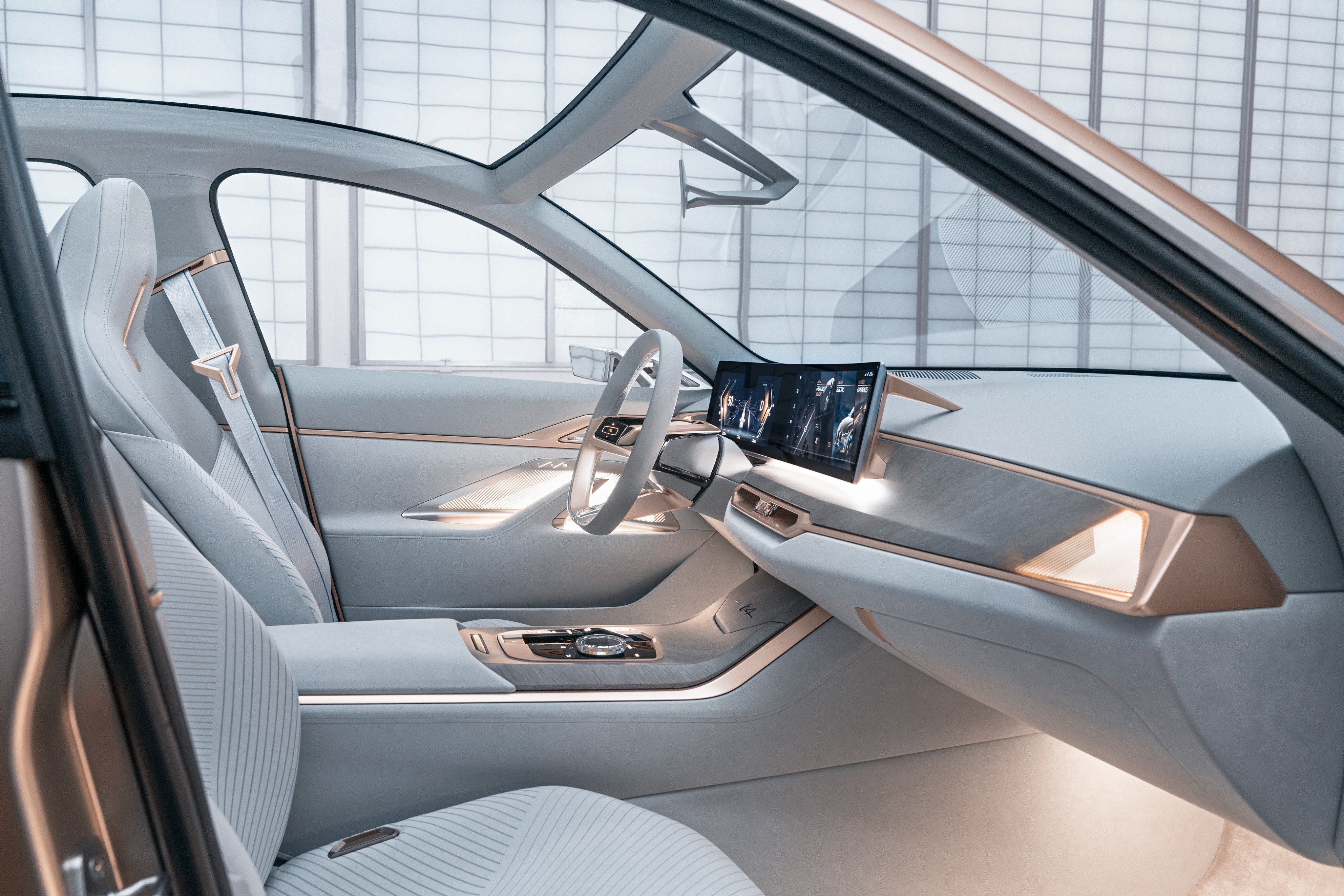
‘We wanted to show how the progressiveness of ‘i’ and electric mobility could fit with our 100 years of heritage,’ says Langer. ‘It’s why we chose a 4-door coupe – it’s old school perfectly matched with new school.’ At the front, the i4 offers up a new interpretation of the company’s shape-shifting double-kidney grille. ‘We have no need for an air intake for cooling at the front,’ Langer says, ‘it’s just for aerodynamics. Instead, we re-integrated the function of the kidney into what we call an ‘intelligence window’ – it contains all the sensors you need for modern driving. It translates the feature into the digital world’
Arguably, BMW’s i models haven’t been the runaway success the company hoped. The i3 and i8 were distinct and different, but despite a decade-long head start, they’ve been eclipsed by other, more conservative EVs. The design team is clear about their mission. ‘We want to reach a lot more customers with the i4,’ says Kampf, ‘we have to be careful about making bold statements, but we also have to live up to our reputation. This car is playing in a different league.’
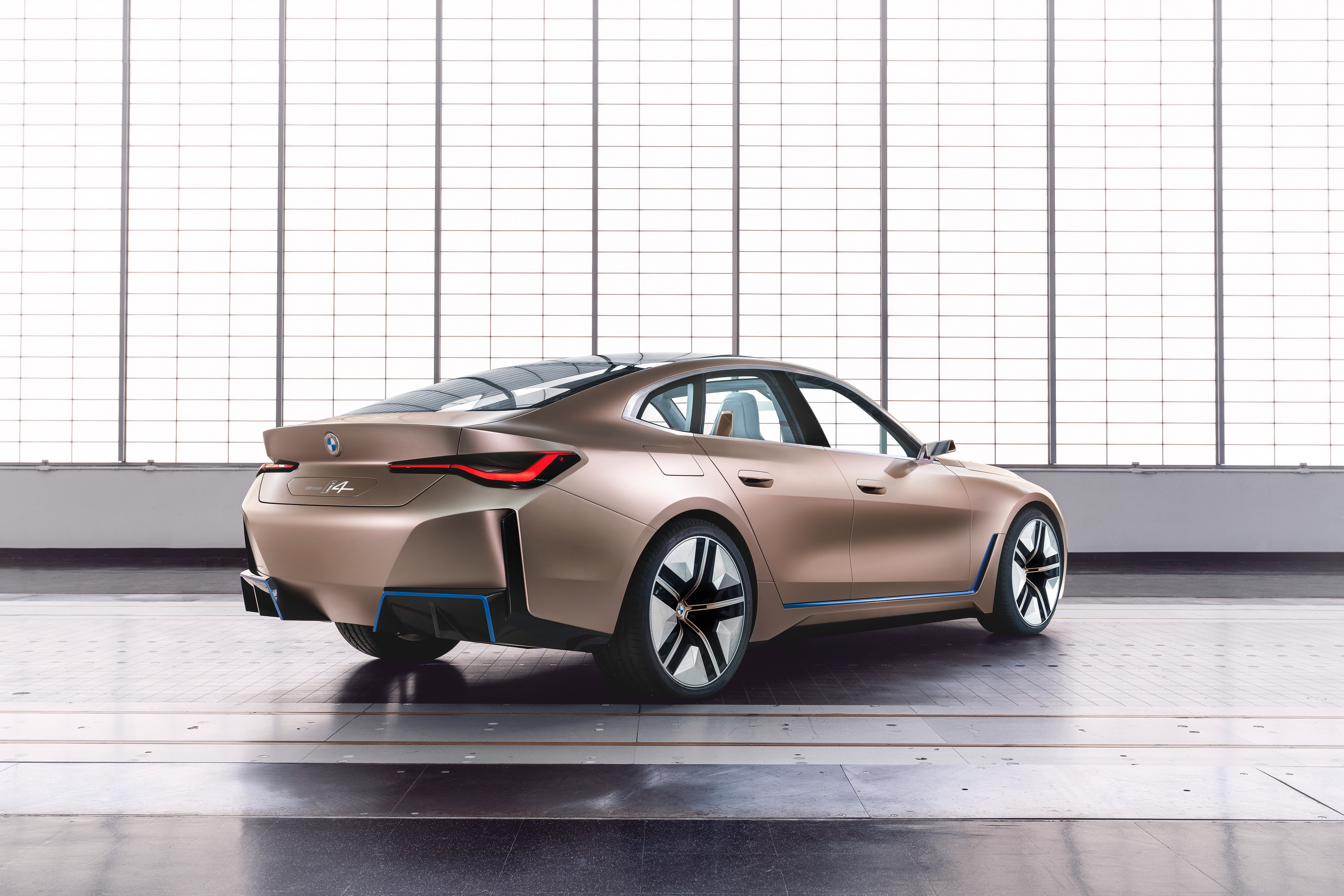
Designworks plays an important role in shaping BMW's future. ‘We’re an outside company that has to provoke and challenge the parent company, we can ‘rattle the cage,’' says Holger Hampf, current president of this satellite studio, tucked away in a business park in 1000 Oaks, just north of Malibu. The company was acquired by BMW some 25 years ago and its influence on BMW Group design strategy has only grown. The studio has a close relationship with the nearby Art Center Pasadena, home to one of the US’s most prestigious transportation design courses. Past graduates include Chris Bangle, former BMW Group Chief of Design. His successor, current Design Chief Adrian van Hooydonk, also spent time at Designworks.
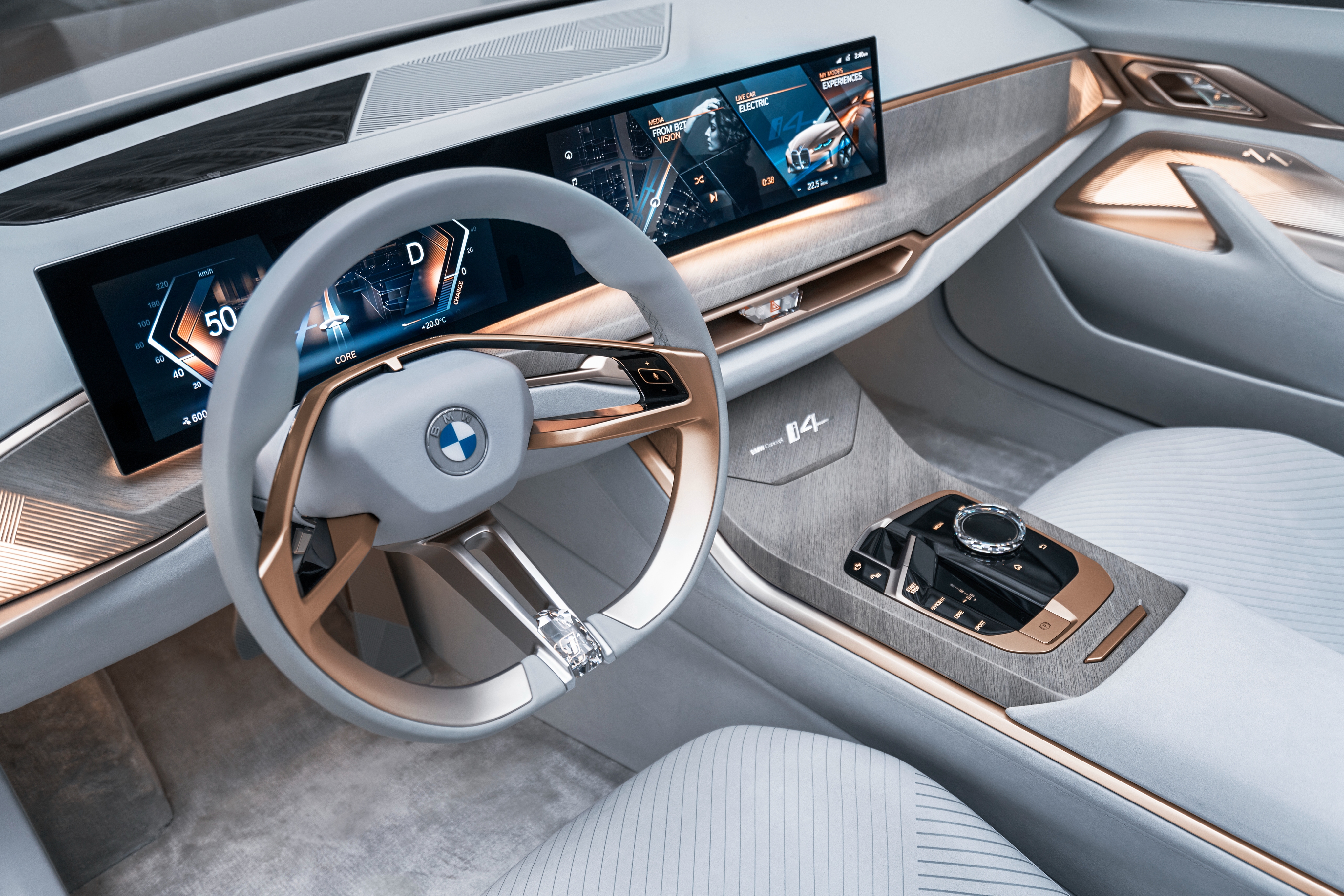
‘It used to be a secret lab that was hidden away,’ Hampf says, ‘but that’s changed as BMW is excited about having its own integrated design consultancy. These days, Adrian [van Hooydonk] puts us on strategic projects.’ Some 50% of the studio’s time is taken up by the BMW Group, with Designworks operations spread between the team of 80 in California, a Shanghai studio of 30 and another 40 people working alongside the several hundred designers at the main BMW studio in Munich. Designworks played a key role in the long genesis of BMW’s ‘i’ brand, shaping the Megacity Vehicle (MCV) at the turn of the last decade that paved the way for the pioneering BMW i3 of 2013. Surprisingly, their second largest client is the agri-industrial giant John Deere, as well as a host of tech firms, from start-ups to established players, and everything from aircraft interiors to superyachts.
Cars and mobility are still the heart of the operation. ‘LA is a very good place for us to be. It’s car culture, messy and creative. It inspires our people,’ says Hampf. The studios are smart and glossy, belying their location on a relatively non-descript industrial estate. Secret clearances abound, and the artfully scattered concept models in the reception areas only go on show once their embargos have long been put to bed. The real action happens behind closed doors. By contrast, the Concept i4 is out and about and interest in the production version is growing. With a mooted 600km range it could prove to be the car that puts BMW at the forefront of the electric revolution. ‘Sustainability isn’t just about recycling, it’s about being efficient, visually as well as physically,’ Langer says, ‘we have more intellectual depth at BMW - we don’t believe in a dystopian future.’

INFORMATION
Receive our daily digest of inspiration, escapism and design stories from around the world direct to your inbox.
Jonathan Bell has written for Wallpaper* magazine since 1999, covering everything from architecture and transport design to books, tech and graphic design. He is now the magazine’s Transport and Technology Editor. Jonathan has written and edited 15 books, including Concept Car Design, 21st Century House, and The New Modern House. He is also the host of Wallpaper’s first podcast.
-
 Roland and Karimoku expand their range of handcrafted Kiyola digital pianos
Roland and Karimoku expand their range of handcrafted Kiyola digital pianosThe new Roland KF-20 and KF-25 are the latest exquisitely crafted digital pianos from Roland, fusing traditional furniture-making methods with high-tech sound
-
 Fulham FC’s new Riverside Stand by Populous reshapes the match-day experience and beyond
Fulham FC’s new Riverside Stand by Populous reshapes the match-day experience and beyondPopulous has transformed Fulham FC’s image with a glamorous new stand, part of its mission to create the next generation of entertainment architecture, from London to Rome and Riyadh
-
 A contemporary Mexican hotel emerges from a 16th-century ruin in Mérida
A contemporary Mexican hotel emerges from a 16th-century ruin in MéridaA renovation project by Zeller & Moye, Mérida’s new Hotel Sevilla wears its architectural interventions lightly, mixing new brutalist elements into listed interiors and a palm-filled courtyard
-
 Rivian hits Miami Art Week to release R1S Quad Miami Edition, a new colour and a scent
Rivian hits Miami Art Week to release R1S Quad Miami Edition, a new colour and a scentVivid sights and evocative smells are part of Rivian’s quest to humanise its all-electric SUVs
-
 RBW EV brings a much-loved classic sports car aesthetic into the modern era
RBW EV brings a much-loved classic sports car aesthetic into the modern eraThe RBW Roadster and GT hark back to a golden age of sports car design. Under the skin, these British-built machines feature bespoke all-electric running gear
-
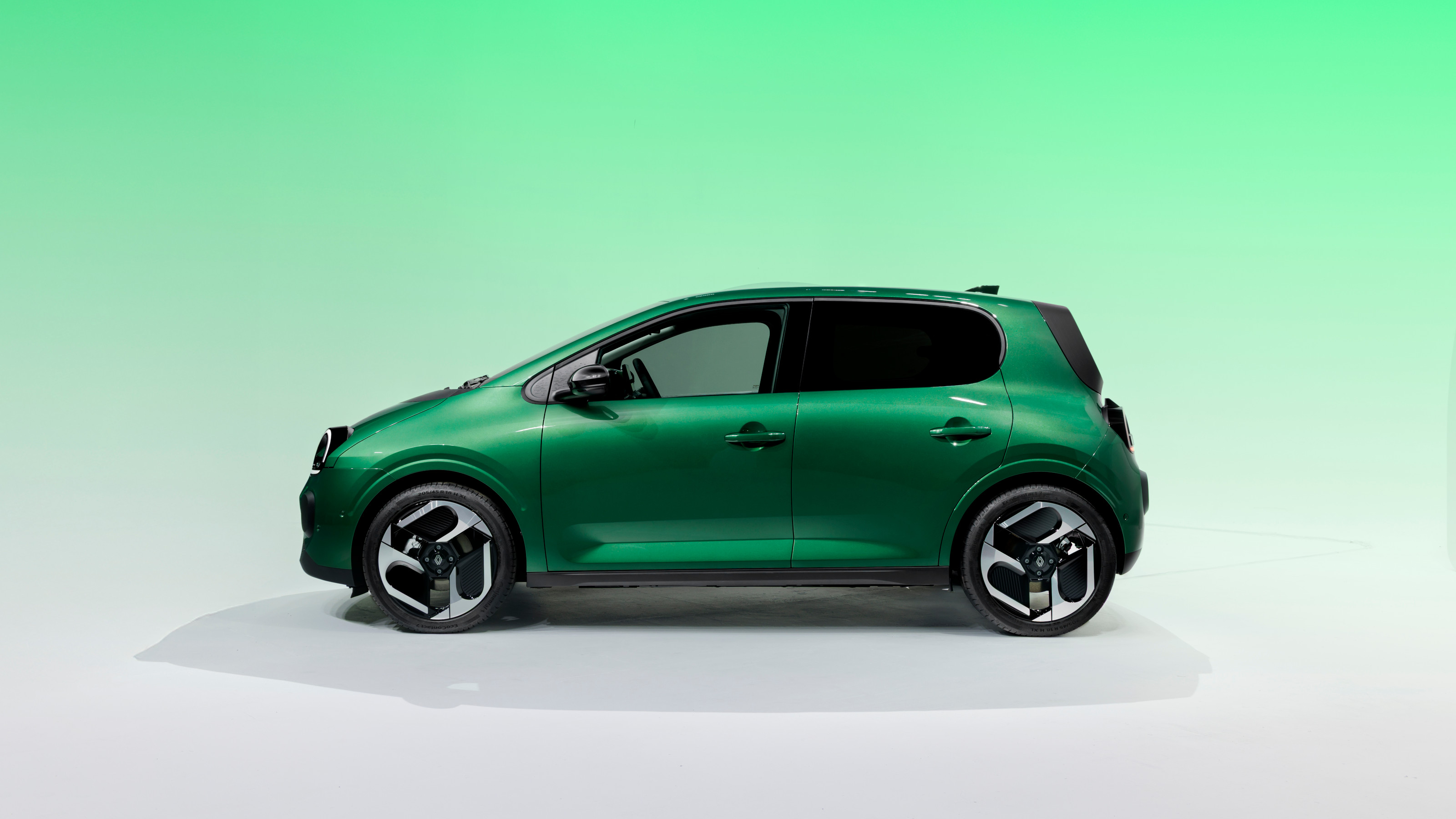 All hail the compact new Renault Twingo E-Tech – the city car is back in style
All hail the compact new Renault Twingo E-Tech – the city car is back in styleRenault continues to pay homage to its heritage by combining it with 21st-century technology. The new Twingo E-Tech is another winner
-
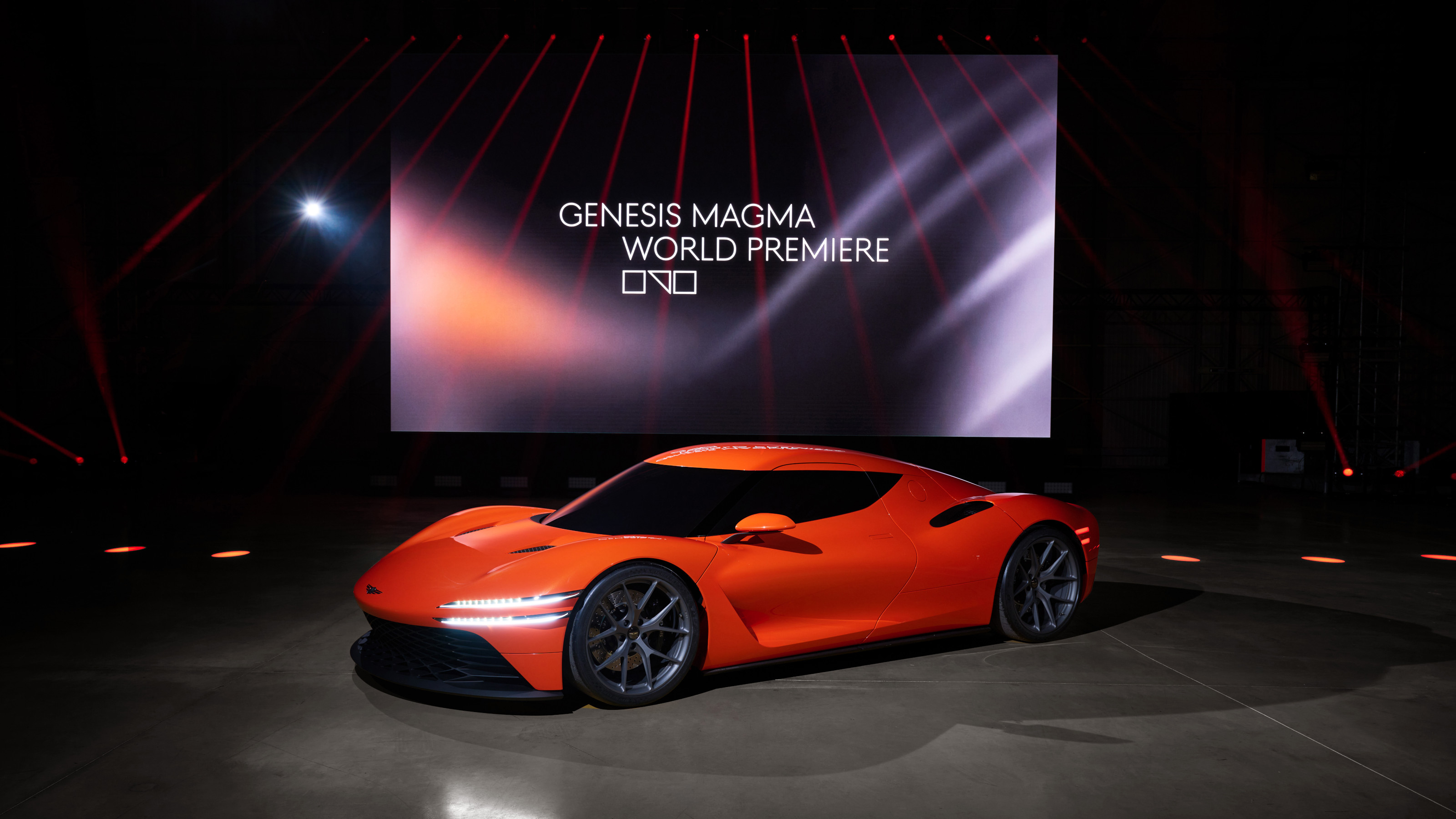 Genesis turns up the heat with its new Magma performance sub-brand
Genesis turns up the heat with its new Magma performance sub-brandGenesis has revealed the hot new GV60 Magma and striking Magma GT Concept in its quest to own luxury performance
-
 Around London in sybaritic silence with the majestic all-electric Lunaz Phantom V
Around London in sybaritic silence with the majestic all-electric Lunaz Phantom VClassic electrifier Lunaz has turned its skilled hands to the Rolls-Royce Phantom V. We sample the ultimate in zero-emission luxury on the streets of London
-
 Avatr Vision Xpectra concept transforms cars into ‘emotionally intelligent companions’
Avatr Vision Xpectra concept transforms cars into ‘emotionally intelligent companions’Revealed in Munich, electric car maker Avatr’s futuristic Vision Xpectra is a car that is not only beautiful, but a true form of ‘emotive luxury’
-
 Dacia wants to make small cars great again – all hail the new Hipster Concept
Dacia wants to make small cars great again – all hail the new Hipster ConceptThe best way to minimise energy use in all its forms is to downsize. The Dacia Hipster Concept is a smart way of making a practical car way more pint-sized
-
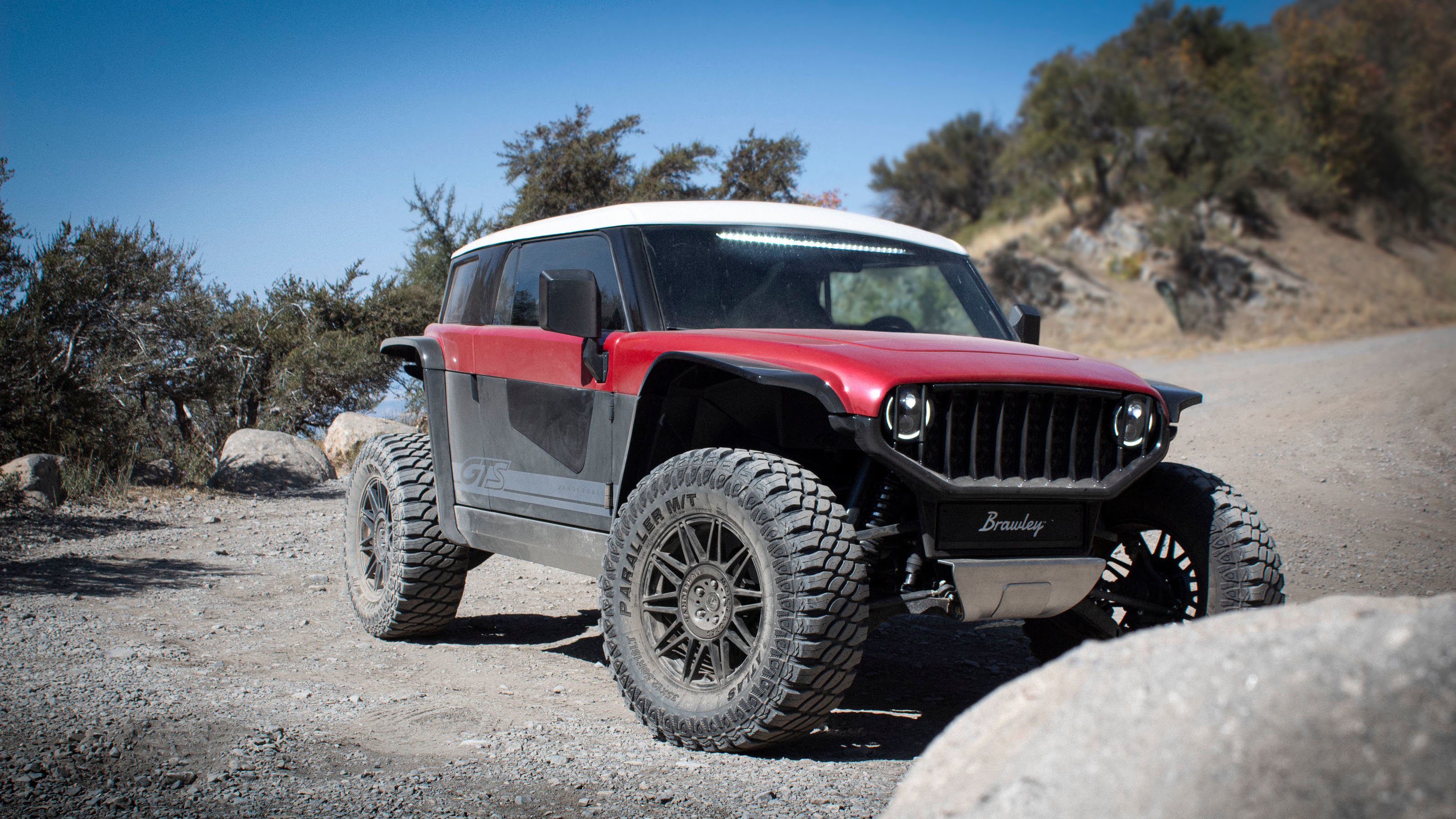 The Vanderhall Brawley GTS is a compact but mighty electric off-roader
The Vanderhall Brawley GTS is a compact but mighty electric off-roaderDeliveries of Vanderhall’s Brawley GTS have started, bringing zero-emission trail driving to enthusiasts across America